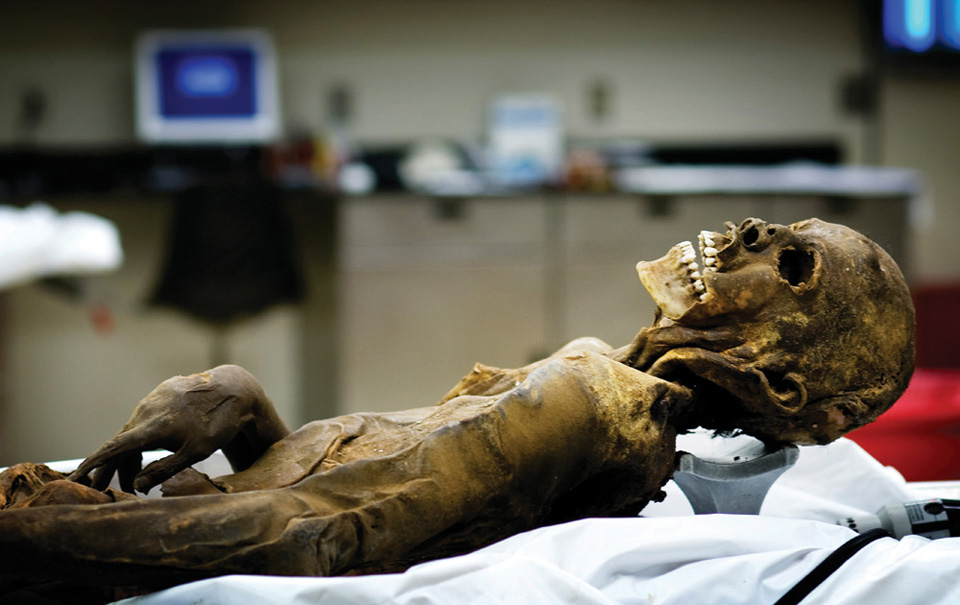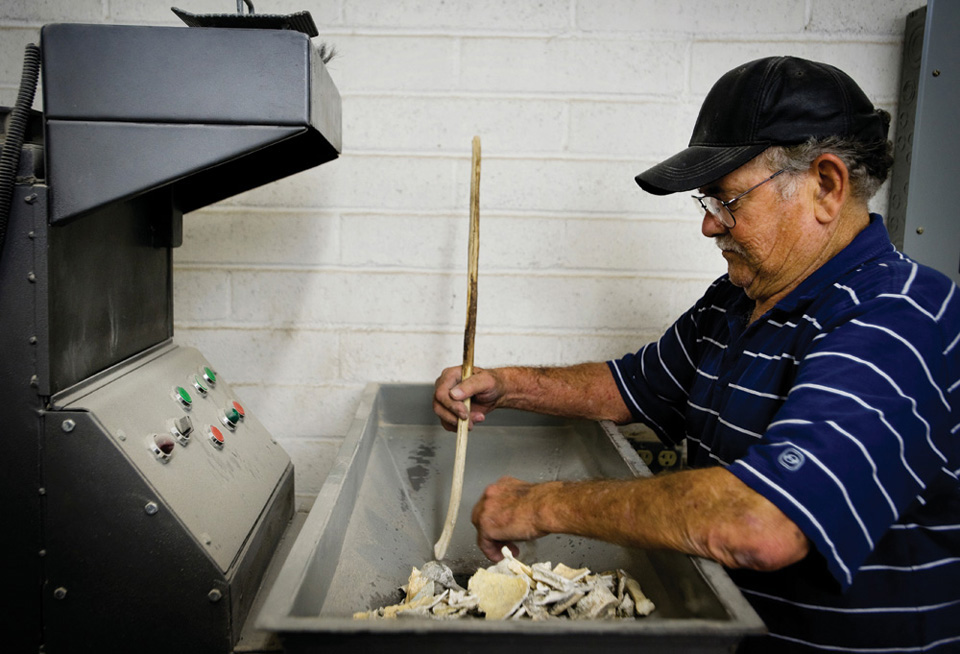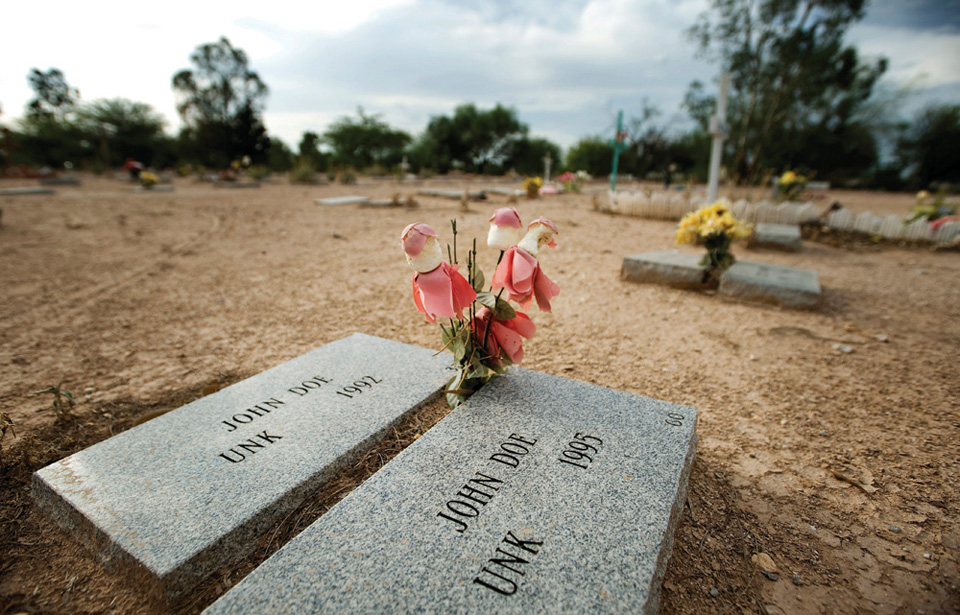Every year, hundreds of anonymous corpses of migrants are found along the US-Mexico border. Often, these bodies are completely unrecognizable: The skin is gone, and the bones have been bleached by the desert sun. Medical examiners make every effort to identify the bodies, but as Andi McDaniel writes in “The Juan Doe Problem” (September/October 2010), they don’t always succeed. “A dead body without a name can’t be buried, not in good conscience, at least, until efforts to identify it seem completely hopeless,” writes McDaniel. “And each person who deals with border bodies has a different definition of hopeless.” Photographer Matt Nager traveled to the border area of Pima County, Arizona, where the local medical examiner deals with dozens of anonymous bodies every month, to document the identification and burial process. You can read the full story here.

The corpse of a presumed migrant, found on the Tohono O’odham Indian Reservation in southern Arizona, rests on an autopsy table at the office of the Pima County medical examiner. An identification card was found 30 feet from the body.

A popular migrant crossing trail and drug smuggling route passes through Mount Wrightson and Coronado National Forest near Green Valley, Arizona. Migrants and smugglers alike will often hike up to the mountain ridges to avoid border patrol, sheriffs, and remote sensors, sometimes leading to perilous falls.

A shrine made of objects found on migrant trails honors those who have died in the desert at the No More Deaths camp in Arivaca, Arizona. The group gives water and medical attention to migrants traveling from Mexico through the desert to the US.

A 43-year-old man from Ahuacatitlán, Guerrero, Mexico, lies unconscious, surrounded by medical officials next to a ranch near Green Valley, Arizona. He was found by a ranch hand and was presumed dead, although he recovered with the help of IV fluids and medical attention. He had been walking for five days with little water and no food.

A funeral-home worker transports the remains of an unidentified body from the office of the Pima County medical examiner to a cooler in the funeral home in preparation for cremation and burial. The remains are presumed to be from bodies of migrants who died attempting to cross the border into the US from Mexico.

A skull and partial skeleton of a presumed border crosser discovered by a woman riding her horse in the Avra Valley area near Tucson. The person is thought to be a male and has been dead for at least a year. No identification was found with the bones.

Rows of body bags, many of which contain remains of unidentified bodies found in the desert, sit in a cooler waiting for identification outside the office of the Pima County medical examiner. The increase in border-crossing deaths in Pima County has resulted in an overflow of caseloads for the medical examiner, as the identification process can take years for each body.

Forensic anthropologist Lori Baker adds a solution to blood samples for DNA testing in her lab at Baylor University in Waco, Texas. Baker runs a DNA missing-persons database with the Mexican consul.

Clothing and bones of a presumed border crosser discovered by a woman riding her horse in the Avra Valley area near Tucson.

The skeletal remains of an unidentified body, presumed to be of a migrant, cool in a cremation oven at a funeral home in Tucson, Arizona. Bodies are released from the Pima County medical examiner for burial after attempts to identify the body have failed. In late 2004, Pima County ruled that anonymous bodies like some found in the desert may be cremated instead of buried to preserve plot space in the cemetery.

A funeral-home worker places remaining skeleton fragments into a grinder for the final stage of a cremation of an unidentified body.

Two grave markers for unidentified bodies at the Pima County Fiduciary Cemetery.
























